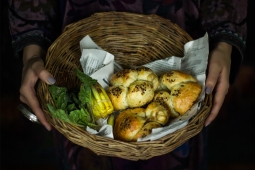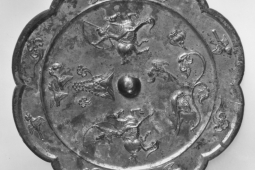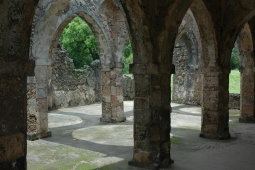Did You Know? The Port Trade Centre of Arikamedu and Roman Exchange with the Indian Subcontinent
© JayaseerlourdhurajThroughout history the Indian Subcontinent has had extensive commercial links with regions to the west through both overland and maritime trade. Many sources dating as far back as the 1st millennium BCE attest to trade between Western Asian and the west coast of the Indian Subcontinent and it is believed that the Babylonians used teak and cedar woods imported from the Indian Subcontinent as early as the 7th and 6th centuries BCE. Much later, merchants from the South of the Arabian Peninsula embarked on extensive maritime trade with the Indian Subcontinent supplying goods from the region to the Mediterranean and Western Asia. During the Roman period close contact between these regions and the Indian Subcontinent intensified, with the Emperor Augustus receiving two embassies, most likely trade missions, from the Indian Subcontinent around 21- 25 BCE. These commercial links typically reached Northern India overland and Peninsula India via maritime routes. However, much less is known about maritime contact with the eastern coast of the Indian Subcontinent compared to the western coast during the same period.
One site which has provided considerable insight into Silk Roads contacts on the south eastern coast of the Indian Subcontinent is Arikamedu, an archaeological site located in Southern India close to the city Puducherry on the banks of the Ariyankuppam river. Arikamedu was an Indo-Roman trading city and one of the earliest known Indo-Pacific bead making centres. The site was mentioned in the Periplus of the Erythraean Sea an anonymous Greco-Roman text of the 1st century CE which described the known coastal landmarks and ports of the Indian Subcontinent’s coastline. Here Arikamedu was referred to by the Roman name ‘Poduke’, appearing again as ‘Poduke emporion’ in Ptolemy’s atlas Geographia in the mid-1st century CE.
Excavations at the site have uncovered substantial evidence of a Roman trading settlement including amphorae, lamps, glassware, coins, beads made of stone, glass and gold, and gems. Based on these finds it appears the settlement engaged in considerable trade with the Roman and later Byzantine world during an extensive period from the 2nd century BCE to the 8th century CE. In addition to this trade Arikamedu was also a centre of manufacture in its own right producing textiles, particularly the cotton fabric muslin, jewellery, stone, glass, and gold beads (for which the settlement was particularly renowned). Many distinctive wares have been uncovered which clearly pre-date Roman exchange including products made locally such as shells, beads and pottery indicating a flourishing local craft tradition before the arrival of foreign influences. Some of the most significant finds from this site of Silk Roads exchange include Indo-Pacific beads, red and black ceramics, and large stones used to mark graves, all of which pre-date its history as a trading post.
The considerable amount of pottery that has been uncovered at Arikamedu can be categorised into three different types, ‘Arretine’ ware named for the Roman city Arezzo in Tuscany where it was produced and imported, amphorae, and rouletted ware, a decorative pottery characterised by an engraved rim on a grey or black surface covered in spiral linear patterns. The rouletted ware has been the subject of much study as later excavations in the 1990s demonstrated that, contrary to earlier scholarship which believed rouletted ware to have been imported from the West, this pottery was actually produced locally, if not at Arikamedu itself then somewhere in South Asia. Despite these findings, the rouletted ware found at Arikamedu often reveals a distinctive foreign influence, most likely from its contacts with Rome, which was blended with local styles. Additionally, it is possible that craftsmen from the Roman world lived and worked at workshops in Arikamedu as two gemstones called intaglio (a distinctive style of engraved gem and major luxury art form in the Ancient World) featuring designs frequently used by Greco-Roman gem cutters have been uncovered at the site.
Sites such as Arikamedu attest to the ways in which exchange between the Roman world and the Indian Subcontinent was multifaceted and allowed for transfers in multiple directions both West-East and East-West. A relationship that began with commercial trade also allowed for a great interaction and transfusion of skills and culture from one region to another particularly in terms of pottery, gem cutting, and stone bead production, allowing what were distant communities to share various elements of craft culture and enriching both societies considerably.
See Also

Influences from the Arabian Peninsula and Iranian Plateau in Thai Music of the Ayutthya Period
Thailand has an abundance of natural resources and opportunities for agriculture which, combined with its advantageous location on the Maritime Silk Roads, has historically drawn people passing through the area to trade

Medieval Cookbooks Reflecting Exchanges in Gastronomic Traditions along the Silk Roads
The ancient routes of exchange across Central Asia directly shaped the diets and foods consumed in Eurasia today. In fact, many of the most familiar grains, fruits, legumes, and nuts enjoyed around the world were first spread across Central Asia






